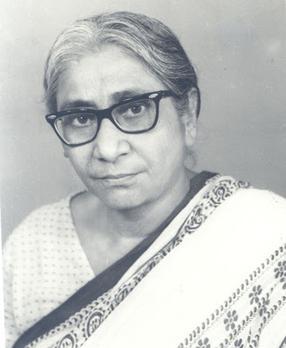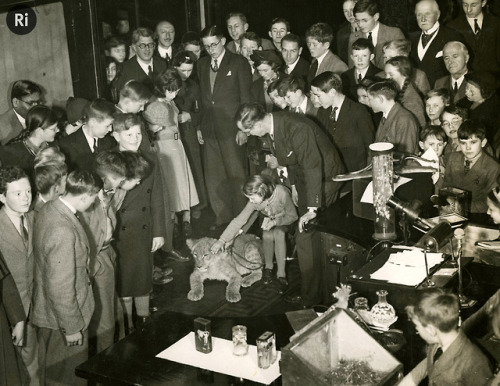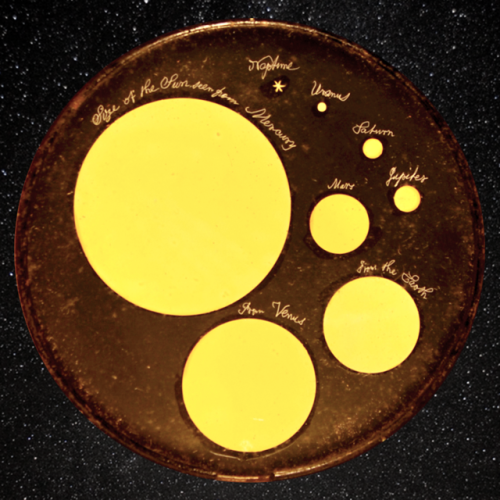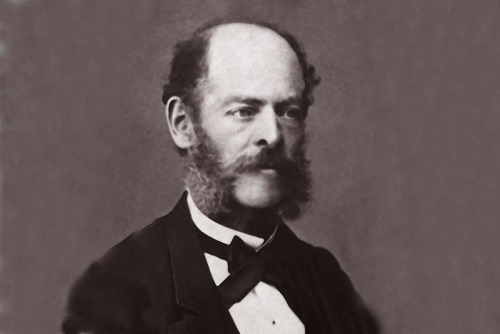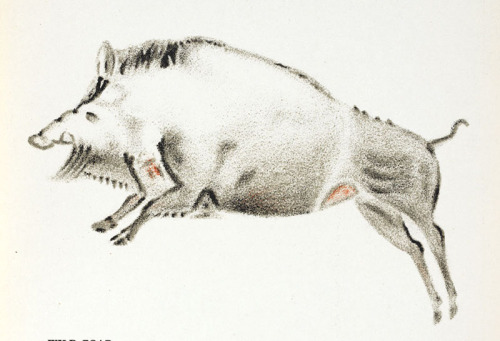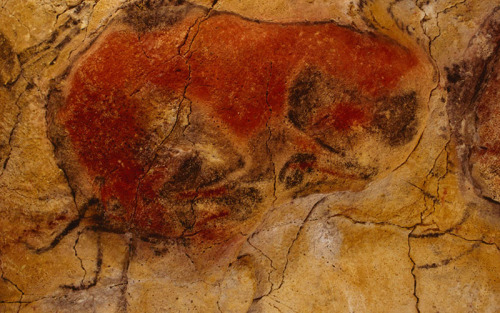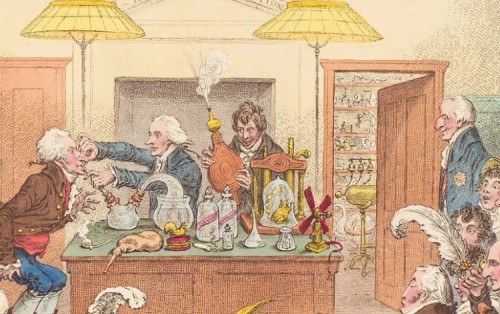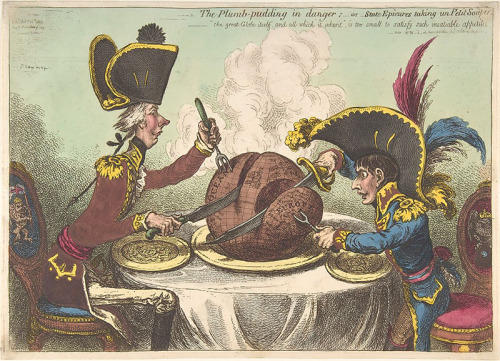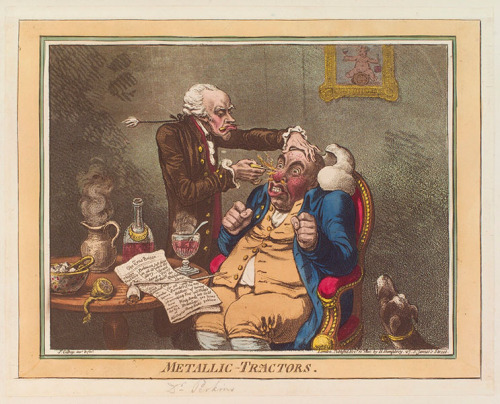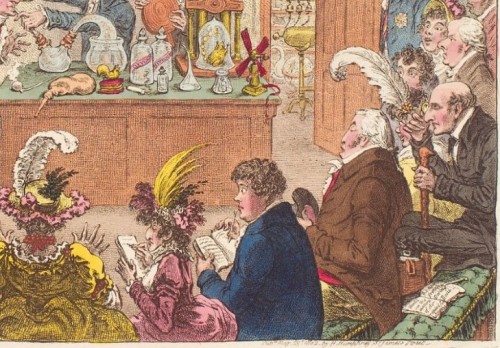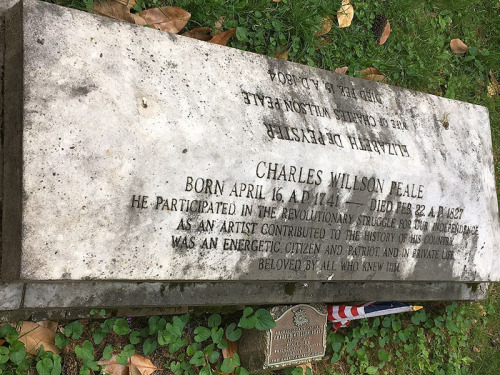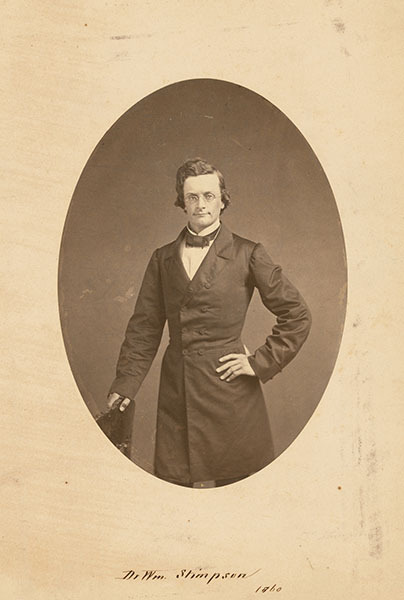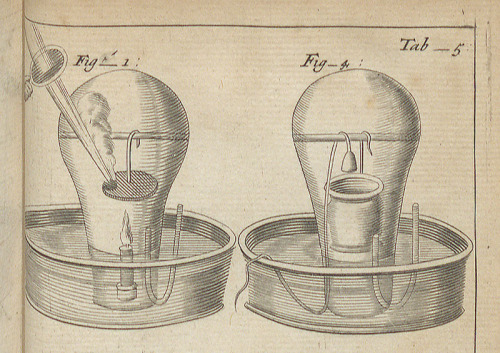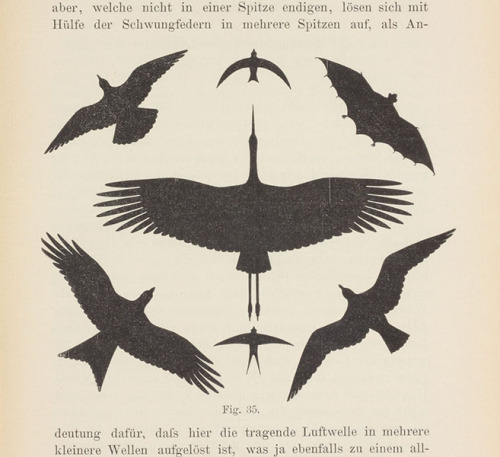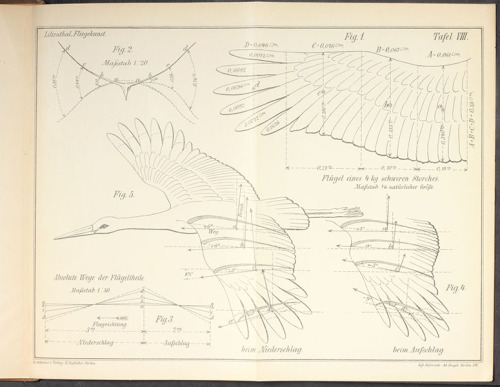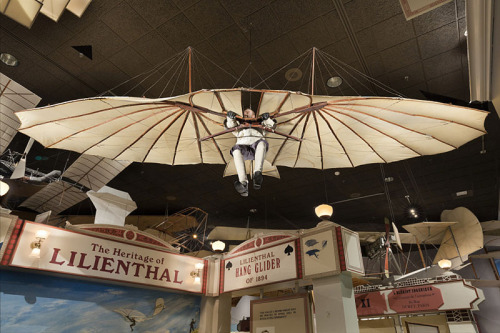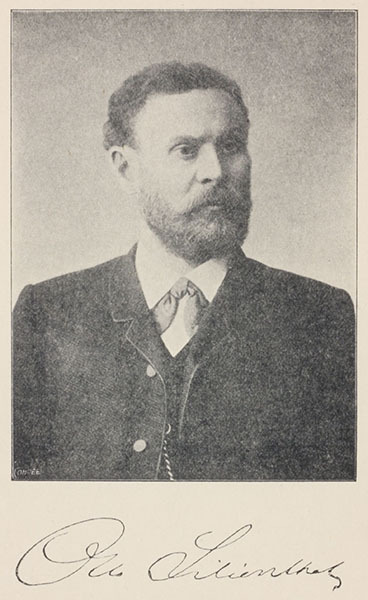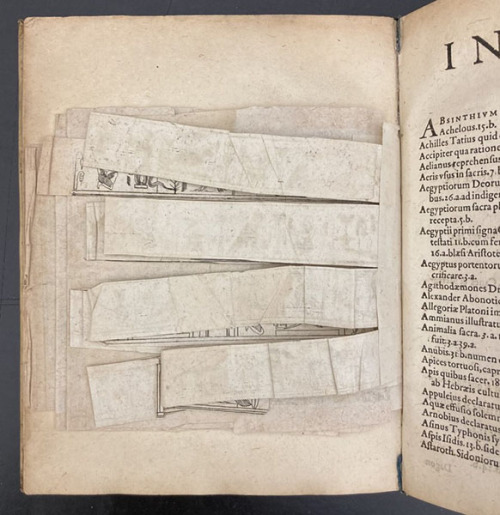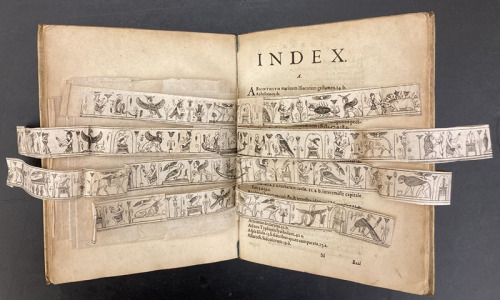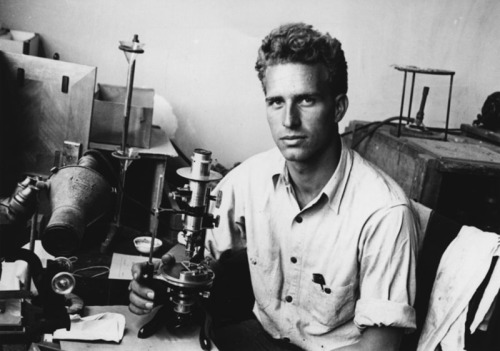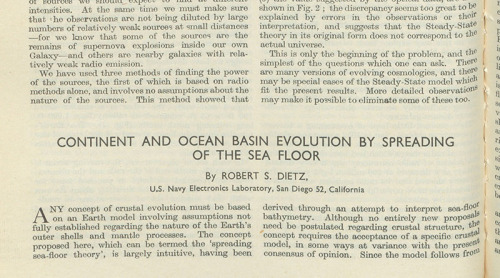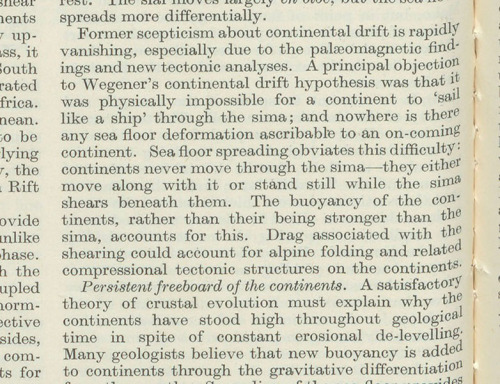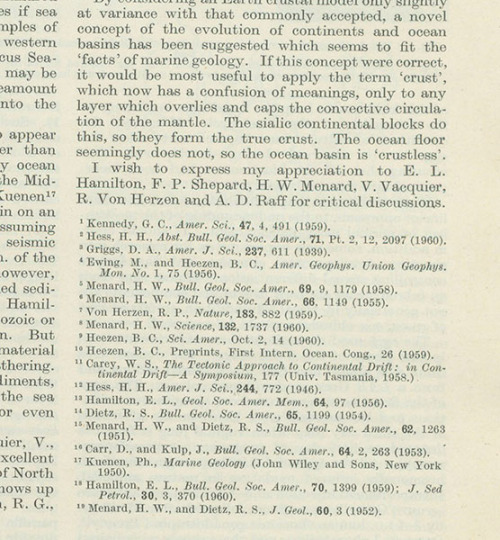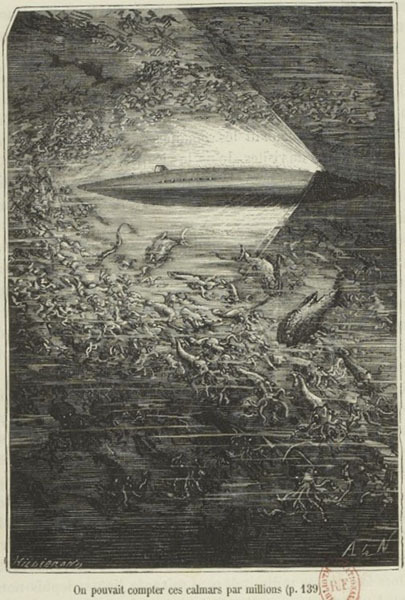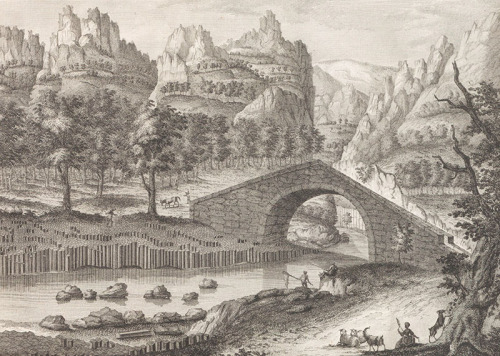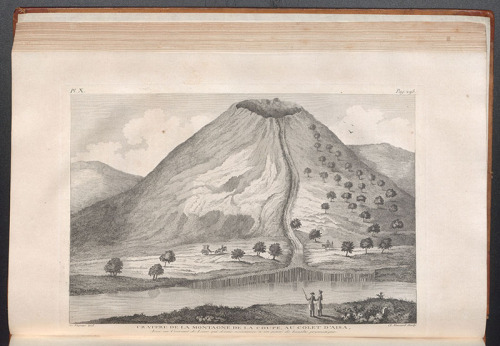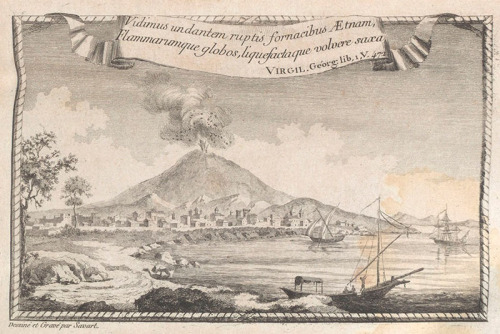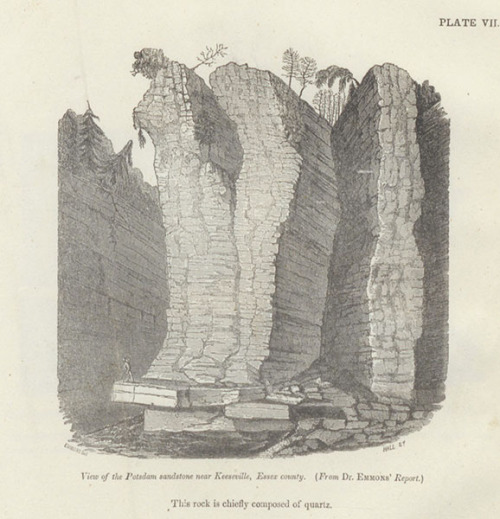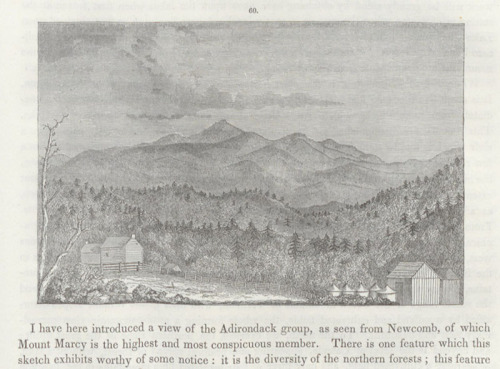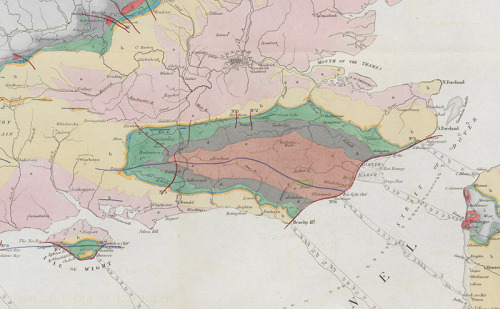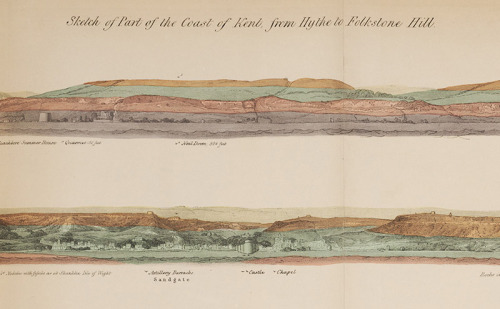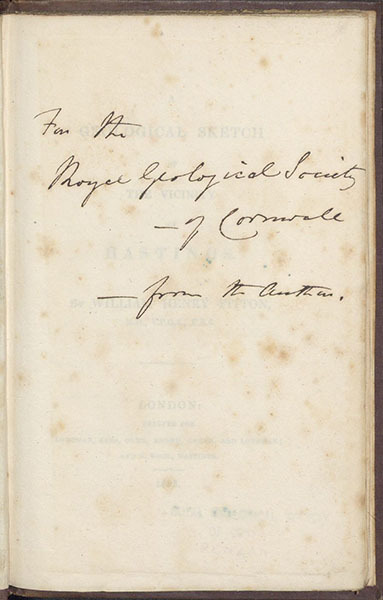#history of science
Color our Collections 2018
It’s finally time for Color our Collections! And we here at Wilson Library are pretty excited about it!
Color our collections (hosted by the New York Academy of Medicine) is a week full of free, printable coloring book pages from your favorite special collections around the country–including our collections here at UNC Chapel Hill!
So find some colored pencils and get ready for a week of arts and crafts fun with special collections! (And check back in with our Tumblr for some bonus content throughout the week!)
Today’s image: Printer’s device fromDell'historia naturale di Ferrante Imperato NapoletanoLibri XXVIII (1599, located in Wilson Library Special Collections)
Post link
smithsoniantranscriptioncenter:
Mary Smith demands accuracy (and pure air) in this week’s Transcribe Tuesday.
Each week, on #TranscribeTuesday, we share work created by digital volunteers in the Transcription Center. That’s not a mystery, but who was Mary Smith? We’re not entirely sure! Transcribe this project, shared by smithsonianlibraries and perhaps we’ll learn more about whether she was a wealthy or well-connected British woman. Mary Smith’s Commonplace Book Concerning Science and Mathematics is a two volume hand-written manuscript, which dates from around 1769-1780, and summarizes science, math, medicine, religion and more.
New hero: the mysterious Mary Smith. (She’s rightly compared to Thomasina Coverly in this blog post.)
Post link
New Jersey State Microbe Approved by Assembly
On February 25, 2019 The NJ Assembly unanimously voted in favor of designating an Official State Microbe, Streptomyces griseus. This brings NJ one step closer to being the second state in the US (and the world) to have a symbolic microbe.
This action sequence shows me (seated) casting the vote for Assemblywoman Annette Quijano (standing) in the Assembly Chamber. Wow, that was cool, and an honor! ASW Quijano was the principal sponsor in the Assembly. The vote was 76 to zero.
Strep griseus produces streptomycin, the first broad spectrum antibiotic and the first significant antibiotic found in America. It was discovered in 1943 in New Brunswick, NJ
Talk about pressure “Don’t press the red button!”
Please read my amazing microbiology book: https://tinyurl.com/Warhol-Small-Guide
More info:https://en.wikipedia.org/wiki/State_microbe
Post link
Asima Chatterjee (1917-2006) was the first woman awarded a Doctor of Science by an Indian University–in 1944, by the University of Calcutta. A chemist, she published nearly 400 papers in national and international journals and much of her work has been extensively cited. Her work led to the development of anti-epileptic drugs & anti-malarial drugs.
She was also the first woman to be elected as the General President of the Indian Science Congress, a premier institution that oversees scientific research.
learn more: https://artsandculture.google.com/exhibit/rgKiCdKgS8UJIw
Post link
Annie J. Easley (1933-2011): computer scientist, mathematician & rocket scientist who worked for NASA. She was a leading member of the team which developed software for the Centaur rocket & one of the first African-Americans to work as a computer scientist at NASA – she was one of four African Americans of about 2500 employees.
Post link
I want you all to know that an Arab Muslim from Tunis proposed the Theory of Evolution near 600 years before Charles Darwin even took his first breath. Don’t let them erase you.
his name is Ibn Khaldun
Also, it was not the apple falling from a tree that made Issac Newton “discover” gravity. He was reading the books of Ibn Al Haytham, an Arab Muslim from Iraq, who pioneered the scientific method, discovered gravity and wrote about the laws governing the movement of bodies (now known as Newtons three laws of motion) some 600 years before Newton existed. Without him, modern science as we know it wouldn’t exist. Read on him. His achievements are far greater than what I’ve just mentioned here.
yo, the two people you’re talking about are both really cool dudes and yes they should be more widely known but stop spreading misinformation. do not use lies to spread the word about cool people and things.
the concept that things evolved from other things was already an idea floating around for basically ever in any scientific circle not completely dominated by creationism. like, darwin didn’t come up with it and he never claimed to. you can find dozens of natural philosophers throughout history like “yo i’m pretty sure that there’s some evolution going on here.”
it was not like the scientists in the 1850s were finding fossils of transitional forms and being like “LOL well dragons i guess!” it was already getting pretty obvious to academics in the 19th century that the earth was really old, life had gone through some serious changes, and there were common ancestors and related species. once maps got good enough for people to go “fuck dude africa and south america fit together” young earth creationism was fucked.
the problem was that there was no mechanism they could devise that would explain how creatures changed from one form into another, which was really kind of the vital piece of the whole thing. they had evidence that there was an evolution of life, but no way to build a theory because they had no way of showing how it might happen. some people were playing with the idea that creatures picked up traits from the environment and passed those to their kids.. somehow, but they had no evidence. they had a chain with no links.
then darwin comes along with some sketches of birds and he’s like “hey so here’s what going on. gregor mendel has shown that traits can be passed along, i’m gonna propose that what’s happening is, creatures that are best suited for an environment to flourish, so this preserves and eventually exaggerates certain traits over time to cause divergences. you go back far enough, like billions of years, all life coulda started from just a few basic types, or maybe even just one ancestor.”
darwin didn’t discover evolution. he proposed evolution by natural selection and he was right.
i mean, mostly. we had to correct his theory a whole bunch as we learned more about things like genetics and dna. he was actually kinda wrong about a ton of shit but that’s to be expected.
secondly, what’s important about newton wasn’t his observations, it was his math.ibn al haytham made a lot of important discoveries and advanced a lot of ideas about physics, especially optics, the big science of the middle ages, but the principles he talked about weren’t quite there yet.
like, he did this whole essay talking about planetary motion which, while more accurate than his contemporaries, was fundamentally inaccurate clockwork universe stuff because he actually hadn’t discovered gravity as a useful theory and he wasn’t able to use it to make predictions about motion.
that doesn’t make him stupid or worthy of being forgotten or nothin’. thats not how science works. he made advances, he didn’t quite have the shape of things yet, his work was important.
newton, building on his successes, was like, yo dawg, orbital mechanics. its like falling, but you miss. here’s a form of math i fucking invented to show some proof. lets check that against the universe.
and we did. and when it turned out his predictions were slightly wrong, some other motherfucker named einstein fixed it. and when he was wrong, etc.
its almost like science is totally built in increments on people who came before and trying discrediting the people who made some of those increments for political reasons is basically just as fucked as forgetting the folks who did the foundation work.
spreading misinformation to try to lionize historical figures so they are acknowledged has the opposite effect. it makes people who know shit roll their eyes and ignore similar posts later on. it makes the people who do read them look like dumbasses when they try to spread the word. it makes you look like one of those liberal stereotypes who disregards reality when it is politically convenient and that is not a good thing to look like.
James Dewar was born #OnThisDay in 1842.
The Scottish chemist and physicist co-directed the Davy-Faraday Research Lab at the Ri from the end of the 19th Century. He is best known for inventing the Dewar flask aka vacuum flask aka Thermos.

Though he sadly didn’t profit from its widespread popularity, as he didn’t patent his invention before Thermos started using the design ()

Dewar’s flask aided his work into the liquefaction of then-so-called permanent gases like hydrogen and helium, as he could work at temperatures close to absolute zero ❄️

Whilst at the Ri he built machinery to yield high quantities of liquid oxygen, and showed that liquid oxygen and liquid ozone are attracted to the poles of a magnet
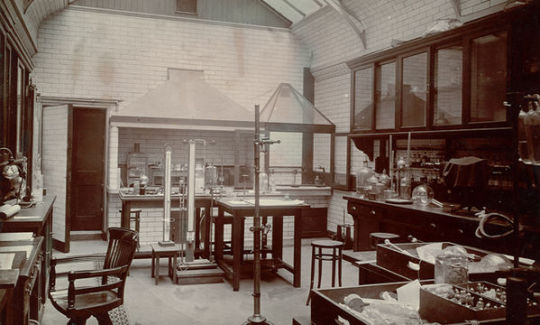
Watch our liquid oxygen magnetism demo here ➡ https://youtu.be/rz57PJToGEs

Dewar created liquid hydrogen for the first time in 1898, solid hydrogen in 1899, and he attempted to create liquid helium in the early 20th century
Click through an interactive version of this photo for a deeper look at his lecture on liquid hydrogen…

He also gave 9 series of Christmas Lectures for children! On topics ranging wide from ‘A Soap Bubble’ to 'The Story of a Meteorite’ to 'The Chemistry of Light and Photography’.
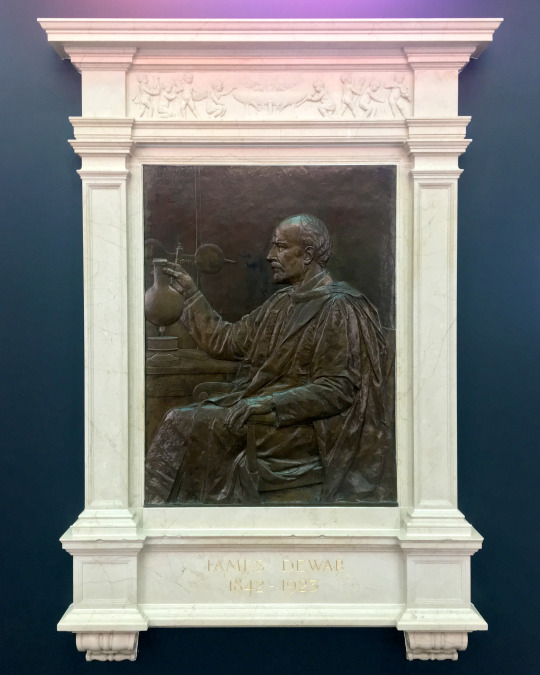
What a guy. Happy Birthday James Dewar
Post link
Michael Faraday achieved electromagnetic induction here at the Ri for the first time #OnThisDay in 1831
His work revolutionised our understanding of electricity and led to the development of electric generators, motors, inductors & transformers ⚡️

Electromagnetic induction is the production of an electromotive force (voltage) across an electrical conductor in a changing magnetic field.

You can find his electromagnetic induction ring and notes within our Museum and archival collection!

If beautifully scrawling handwriting ain’t your thing, read the transcription of Faraday’s notes here.
Post link
If you’ve ever wondered who to thank for your ice cold drink on a hot Summer’s day, it’s this legend: James Dewar. Dewar invented the flask that many of us use daily.
Dewar never patented his invention of the flask. Instead, it was later patented and renamed by 2 German glass blowers, who set up the Thermos company, giving the Dewar flask its common name - the Thermos! *Dewar shakes fist*

The Dewar flask works by placing a smaller flask within a larger one, and sealing them at the neck. Between the 2 vessels is a gap which has had almost all of the air sucked out to create a near-vacuum.
This vacuum reduces heat transfer between the drink inside your flask, and outside world, be it hot or cold. This is because there are too few particles in the vacuum for heat energy to transfer through it by conduction or convection currents.
☕️
Post link
Nikola Tesla was born on this day in 1856.
Aged 35 (and a half) Tesla delivered a talk here at the Ri on AC power that was so spectacular, audiences flocked back the next night for an encore.
We love a science demonstration, and judging by his sprawling lecture desk, so did Tesla…


120 years after Tesla stood in the Faraday theatre (in 1892) we recreated a demonstration of his Tesla coil in the 2012 Christmas Lectures: https://youtu.be/5piP_qfDvBA?t=4s

Click here to watch the Christmas Lectures in full.
Post link
A lion cub and a room full of children - what could possibly go wrong? This photo is from Julian Huxley’s 1937 Christmas Lectures ‘Rare Animals and the Disappearance of Wild Life’

Julian Huxley was born on this day in 1887. A passion for evolutionary biology clearly ran in the family - he was the grandson of Thomas Henry Huxley, AKA ‘Darwin’s Bulldog’ for his staunch and loyal support of Darwin’s theory of evolution by natural selection.
Post link
On this day in 1903 Pierre Curie, accompanied by Marie Curie, gave a Friday Evening Discourse at the Ri, simply titled ‘Le Radium’.

That same year Pierre and Marie were awarded half of the Nobel Prize for Physics for their work on the spontaneous radiation discovered by Henri Becquerel, who was awarded the other half of the Prize.

Pierre Curie used an early sample of radium during his Discourse demonstration and stored it in this copper alloy pot and box, which are still radioactive to this day.

Post link
A magic lantern slide from c.1850 showing the size of the sun in the sky, as viewed from different planets in our solar system
Click here to learn how this slide and others in our collection were used to bring astronomy presentations to life at the Royal Institution
#sun#sunny#solar#astronomy#archive #magic#lantern
Post link
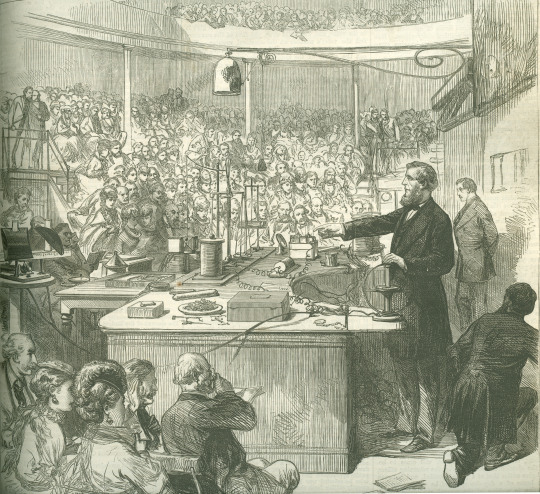
The history of climate science goes back a long way. In 1859, spurred by his work on glaciers, John Tyndall discovered how gases absorb heat by developing and experimenting with extremely sensitive equipment called the ‘radiant heat apparatus’.
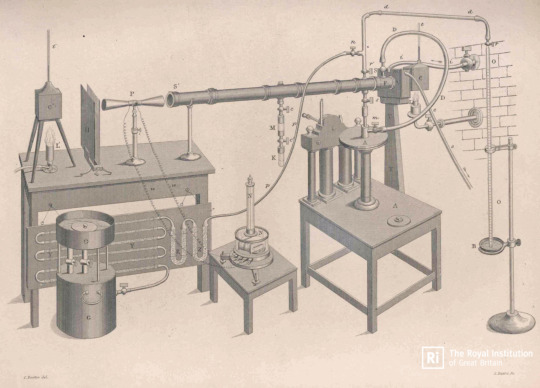
Knowing how different gases absorb heat to different degrees helped scientists later understand how heat is trapped by the Earth’s atmosphere - what we now call the greenhouse effect.
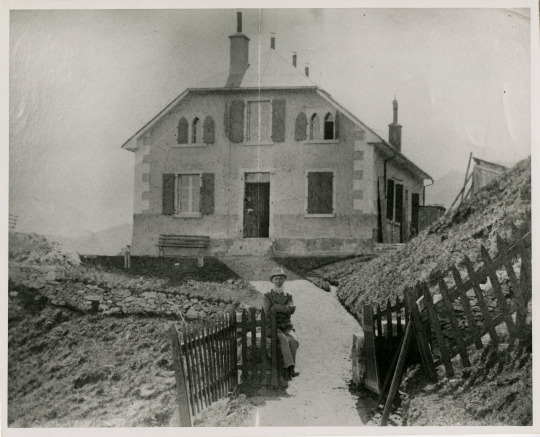
As a glaciologist and physicist Tyndall spent a lot of his time hanging out on mountains. Here he is outside the house he had built up Belalp in Switzerland, with his wife Louisa peeking through the front door.
If you’re in the USA, tune in to Nova on PBS tonight at 8pm to catch Andrea Sella recreate Tyndall’s radiant heat experiments, right here at the Royal Institution where he first made his breakthrough.
It’s our Birthday!
On this day in 1799 (219 years ago) the Royal Institution of Great Britain was founded. 219 is a happy number, so it’s an especially Happy Birthday for us
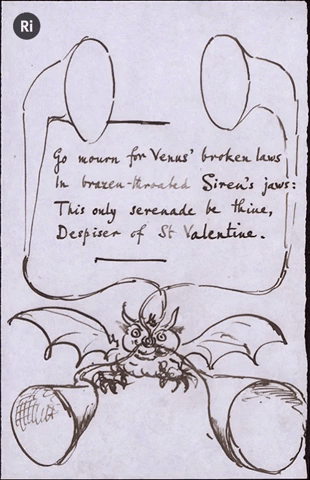
Happy Valentine’s Day! We found some slightly creepy Victorian Valentines poems in the Tyndall collection. These weren’t serious love notes, but a running joke between John Tyndall and his friends ❤️

“Callous, cruel, clever Tyndall! Pause, lest for your sport you kindle“
To be fair, Tyndall is a tricky word to rhyme.
The words ‘sonorous’ and 'sensitive!!!!’ refer to Tyndall and William Barrett’s work on 'sensitive flames’: http://www.rigb.org/blog/2014/august/sensitive-flames?utm_source=tumblr&utm_medium=social

“In pretty strife
To start to life
My waking atoms stir
Their motions fine
To thee incline
My heart’s thermometer!”
From the Royal Institution Archival Collection.

On this day in 1834, Michael Faraday wrote about his continued failure to isolate fluorine.
(Hey, you win some, you lose some).
The element had been identified in minerals, but as fluorine is extremely reactive and forms compounds with most other elements, it had never been isolated before.
This is what happens when fluorine gas hits coal…

Faraday experienced the problem of fluorine’s reactivity 184 years ago today, when he tried using electrolysis to disassociate fluorine from a lead fluorine compound.
Watch this video to learn more from our archives: https://www.youtube.com/watch?v=ihOD0F8Ukbc
Humphry Davy had previously attempted to isolate fluorine using electrolysis (which had led him to successfully isolate sodium and potassium). But Davy worked with hydrofluoric acid, which is corrosive and damaged his eyes.
Davy recovered, but many other experimenters with the dream of being the first to isolate fluorine, ended up poisoning themselves, and became known as the ‘fluorine martyrs’.
After 74 years and many chemists’ trial and error, elemental fluorine was eventually isolated via electrolysis by Henri Moissan in 1886, for which he was awarded the Nobel Prize in 1906.

Thanks to their hard work, now we can do fun things like putting fluorine (most reactive non-metal element) and caesium (super reactive metal element) together:https://www.youtube.com/watch?v=TLOFaWdPxB0
When Science Went Modern
By Lorraine Daston
The history of science is punctuated by not one, not two, but three modernities: the first, in the seventeenth century, known as “the Scientific Revolution”; the second, circa 1800, often referred to as “the second Scientific Revolution”; and the third, in the first quarter of the twentieth century, when relativity theory and quantum mechanics not only overturned the achievements of Galileo and Newton but also challenged our deepest intuitions about space, time, and causation.
Post link
As a very serious adult, with a respectable career and life, and a healthy ability to let petty shit slide, I spent much too much time last week arguing with strangers on the internet who believe in the myth of the Dark Ages.
The arguments in question focused on a massively inaccurate meme, which some observers of the group pointed out was originally supposed to be about knowledge loss after the burning of the Library of Alexandria, but which some very cool EDGE LORD had changed to be about ‘The Christian Dark Ages’. Please feast your eyes on it in all it’s massive wrongness:
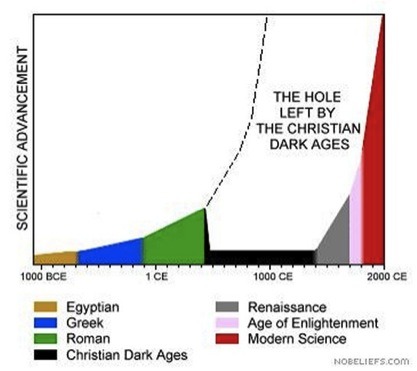
This is, pretty obviously, a bunch of honkey bullshit and also massively incorrect, as many important scholars have noted. As a result, I spent hours of my life – which I will never get back - pointing out repeatedly that the ‘graph’ in question has nothing to do with reality, and arguing with non-experts about the medieval period.
For the most part – these people were well-meaning. Many pointed out that this was a very Euro-centric world view, and that Asia, Africa, and the Arab world were all making huge advancements in scientific and medical theory at this time. That is absolutely true. White people have never been the entire world. The Chinese had a massively advanced scientific culture by this time, for example, and had been holding it down with hermetically sealed research laboratories since the third century BCE. The Arab world, meanwhile was compiling treatises on eye surgery. Scientific advancement was something that was happening in this period. Europe is not the centre of the world.
Having said that, while it is important to acknowledge that the-rest-of-the-world was making huge strides in scientific advancement during this time, and that Europe and white people are not the entire world, nor responsible for all of human advancement, there was no such thing as the Dark Ages in Europe either.
While everything about the idea of the Dark Ages is incorrect, lets start off with the way the term was meant to be used. The totally ignorant graph above, unsurprisingly, is completely fucking off. Hilariously, the idea of the ‘Dark Ages’ actually originated in the medieval period itself. Petrarch – the poet laureate of fourteenth-century Rome - was actually the originator of the idea that there was a period of stagnation that Europe was moving out of. Petrarch had a political axe to grind. He considered that any point at which Rome – where he lived and worked and had considerable sway – did not completely dominate the world was a BAD TIME. This is not an unbiased assessment of world history.
The actual phrase ‘Dark Ages’ itself derives from the Latin saeculum obscurum, which Caesar Baronius – a cardinal and Church historian - came up with around 1602. He applied the term exclusively to the tenth and eleventh centuries. However, and very significantly in his use of the term, Baronius was not decrying a state of scientific malaise, or a particularly turbulent political period – he’s talking about a lack of sources surviving from that time. Indeed, Baronius sees the cut off point for the dark ages to be the Gregorian reforms of 1046, following which we see a massive increase in surviving documentation. Witness an actual useful chart:
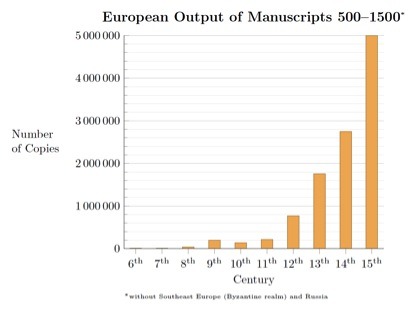
When we move into a period where there are more texts to be considered, Baronius argues, Europe moved out of the period of darkness and into a ‘new age’.*
Now this is some real talk. As you can tell from that graph, during the Carolingian Renaissance of the ninth century, we see a flurry of Latin writers emerge, and a lot of text copying. This drops off again until what we term the Twelfth-Century Renaissance – home to this blog’s favourite philosopher/proto-Kanye – Abelard. (Shout out to my boy.) However, when people use the term ‘Dark Ages’ now, they usually use it to talk about the entire millennium of the Medieval period, and they aren’t talking about source survival. They aren’t thinking ‘dark’ as in ‘occluded’, they are thinking ‘dark’ as in pejorative.
We can thank the Enlightenment historiography for the expansion of the idea that the medieval period was a bad dark time. KantandVoltaire in particular liked to see themselves as a part of an ‘Age of Reason’ as opposed to what they saw as the ‘Age of Faith’ of the medieval period. To their way of thinking, any time that the Church was in power was a time of regressive thinking. The Middle Ages, then, was a dark time because it was so dominated by religion.
The first push back against the term dark ages began with the Romantics. After the, um, unpleasantness of the Reign of Terror, and the major cultural and environmental upheavals of the Industrial Revolution it became fashionable to look at the medieval period as a time of spiritual focus, and environmental purity. Obviously this is a super-biased way of looking at the period – just like it was biased for Enlightenment thinkers to take one look at the primacy of the Church and declare an entire millennium to be bad. I mean, really what the Romantics were doing was just casting shade on the Enlightenment historiography because they felt like it inevitably led to the guillotine. But what can you do?
By the twentieth century historians had moved on from the idea pretty much completely. If you take the time to actually, you know, study the medieval period, it becomes very apparent very quickly that there was a tremendous amount of intensive thought happening. This is the era of Thomas Aquinas – a bad ass philosopher who will think you under the fucking table. Of Hildegard of Bingen – who basically founded scientific natural history in the German speaking lands. Hell, like we talked about last week Rogerius and Giles of Corbeil were throwing it down for major medical advancement. There was a lot going on. On the real, without the contributions of medieval thinkers you would not get Galileo, Newton, or the Scientific Revolution. The medieval period was not a period of stagnation, it was a time of progress.
But it’s not just that the idea of a ‘Dark Ages’ makes no sense when you look at what incredible advancement was happening at the time, it also makes no sense because it implies that stuff was going really well under the Romans. We estimate that somewhere between thirty to forty percent of the population of Italian Rome were slaves. The Romans had total bans on human dissection, meaning that there was no real way for medicine to progress any further than it had by the time of collapse – a problem that medieval people didn’t have. I mean even if you just want to make it about religion - the Roman Empire was Christian at the time of its collapse and had its heads of state worshipped as LITERAL GODS during the pagan era. Somehow every edgy motherfucker with a fedora is totally cool with this and thinks it is super reasonable though. Because ¯\_(ツ)_/¯. The Romans were not a bunch of really awesome people living a life of idealised rationality any more than medieval people were all ignorant savages living in fear of God.
Is there a time that historians use the term ‘Dark Ages’? Yeah, we do use it to talk about source survival rates. It’s not a term we use as a value judgment, however. We just mean that we don’t have a lot of evidence to go off of. By the same token – if we somehow move on to another electronic format without converting the way things are stored now, we could be moving into a theoretical Digital Dark Age, where historians in the future won’t be able to study what we are writing now. (And that would be a tragedy, because legit, I would killto be a historian working on Donald Trump’s tweets in the year 2717.)
We’re now moving away from using the term Dark Ages at all, however, because of the frequency with which it is misinterpreted. I mean, if every basic motherfucker out there who never bothered to read God’s Philosophers (hat tip to James Hamman – this book is amazing) will insist on willfully misinterpreting us, we just ain’t gonna give them the ammo.
What it comes down to is that the medieval period was as vibrant as any other period of history. If you’re going to player hate, go ahead, but please don’t act like you know anything about either medieval or ancient history when you do. There is no period of rational supermen followed by ignorant monsters. There are just people doing their best in the circumstances.
* Caesar Baronius, Annales Ecclesiastici Vol. X. (Rome, 1602), p. 647. “Novum incohatur saeculum quod, sua asperitate ac boni sterilitate ferreum, malique exudantis deformitate plumbeum, atque inopia scriptorum, appellari consuevit obscurum.”
William Yarrell – Scientist of the Day
William Yarrell, an English naturalist, was born June 3, 1784.
Post link
Marcelino Sanz de Sautuola – Scientist of the Day
Don Marcelino Sanz de Sautuola, a Spanish jurist and amateur archaeologist, died June 2, 1888, at the age of about 57.
Post link
James Gillray – Scientist of the Day
James Gillray, a British caricaturist and etcher, died June 1, 1815, at age 58.
Post link
Chien-Shiung Wu – Scientist of the Day
Chien-Shiung Wu, a Chinese-American experimental physicist, was born May 31, 1912, in Jiangsu province, China.
Post link
Charles Willson Peale – Scientist of the Day
Charles Willson Peale was an early American portrait painter, founder of the first natural history museum in the country, and the man who unearthed and mounted the first mastodon skeleton in the world, which he exhibited in his museum.
Post link
William Stimpson – Scientist of the Day
William Stimpson, an American marine zoologist, died May 26, 1872, at age 40.
read more…
Post link
John Mayow – Scientist of the Day
John Mayow, an English chemist, physician, and physiologist, was born in 1642 in Cornwall.
read more…
Post link
The Falkirk Wheel – Scientist of the Day
The Falkirk Wheel, a boat lift in central Scotland, opened May 24, 2002.
read more…
Post link
Otto Lilienthal – Scientist of the Day
Otto Lilienthal, a German engineer, was born May 23, 1848.
Post link
Pietro Bembo – Scientist of the Day
Pietro Bembo, an Italian writer and cleric of the late Renaissance, was born May 20, 1470.
Post link
Robert Dietz – Scientist of the Day
Robert Sinclair Dietz, an American marine geologist, died May 19, 1995, at the age of 80.
Post link
Alphonse de Neuville – Scientist of the Day
Alphonse-Marie-Adolphe de Neuville, a French painter and illustrator, died May 18, 1885, at the age of 50.
Post link
Barthélemy Faujas-de-Saint-Fond – Scientist of the Day
Barthélemy Faujas-de-Saint-Fond, a French geologist, paleontologist, and scientific traveler, was born May 17, 1741.
Post link
Ebenezer Emmons – Scientist of the Day
Ebenezer Emmons, an American geologist, was born May 16, 1799, in Middlefield, Mass.
read more…
Post link
William Henry Fitton – Scientist of the Day
William Henry Fitton, an Irish/English geologist, died May 13, 1861, at the age of 71.
Post link






